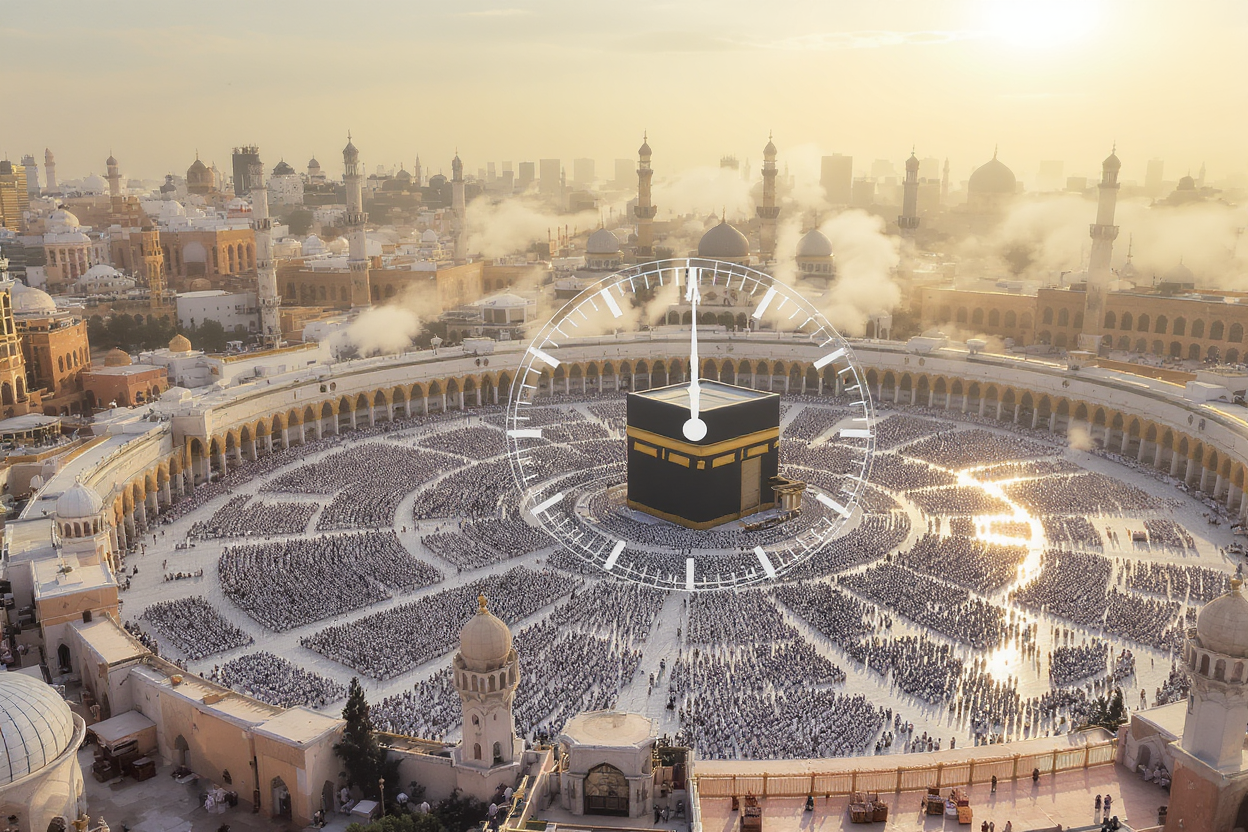Visiting the Haram in Makkah or Madinah is a life-changing experience. Many pilgrims arrive with excitement, hope, and eagerness to make every moment count. But once you enter the sacred atmosphere, you notice how quickly time moves between prayers, resting, eating, and exploring the holy sites. This is where prayer-time planning becomes helpful. Instead of letting the day pass without structure, planning your activities around the prayer times helps you enjoy a balanced, focused, and peaceful spiritual journey.
Prayer-time planning does not mean creating a strict schedule. It simply means understanding how the day flows inside the Haram and how you can use that rhythm to organize your spiritual goals, much like the structured routines offered in Umrah Packages All Inclusive. With so many pilgrims, long walking distances, and limited space during peak times, good planning gives you mental peace and allows you to pray comfortably without rushing.
What Is Prayer-Time Planning
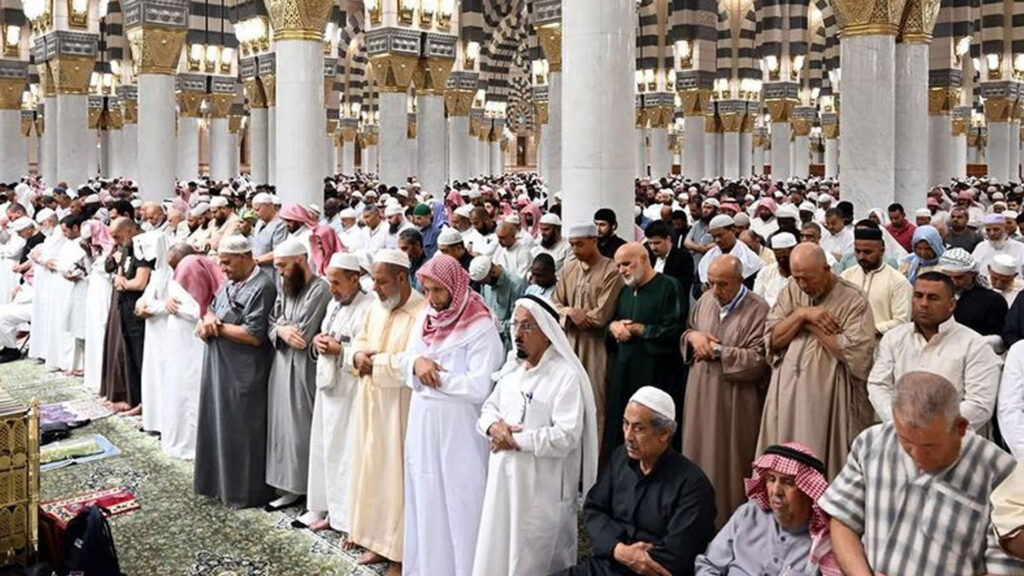
Prayer-time planning is the simple act of organizing your day around the five daily prayers inside the Haram. It means understanding the timing of every Salah, knowing how long it takes to reach the prayer area, and adjusting your activities so you arrive on time. When you plan your day according to Salah, you naturally build a routine that keeps you calm and focused on the purpose of your trip.
This type of planning helps you use the hours between prayers wisely. It ensures you do not miss your place in the Haram, lose precious time walking in crowded areas, or become tired from rushing. Instead, your day becomes smoother, calmer, and more meaningful.
Importance of Prayer-Time Planning in the Haram
The Haram has a special rhythm that follows the prayer times. When you understand this rhythm, your whole day becomes easier. For example, pilgrims often start gathering up to 45 minutes before each prayer. If you arrive late, you may struggle to find a place or spend the entire prayer standing in a hallway. This is why planning matters.
Another reason planning is important is because every prayer inside the Haram holds greater reward. People travel from around the world for this blessing, so missing a prayer due to poor scheduling can feel disappointing. With proper planning, you can make the most of every opportunity without stress.
Balancing Worship and Rest
Many pilgrims try to perform every prayer, every tawaf, and every activity without rest. This leads to exhaustion very quickly. When you plan your day based on prayer times, you automatically create natural breaks. These breaks give you time to eat, drink, freshen up, or rest so you have energy for the next prayer.
A balanced routine also protects your emotional wellbeing. The Haram can be overwhelming due to crowds, movement, and long distances. But when you plan ahead, you avoid unnecessary walking and conserve energy for worship.
Understanding Peak Times in the Haram
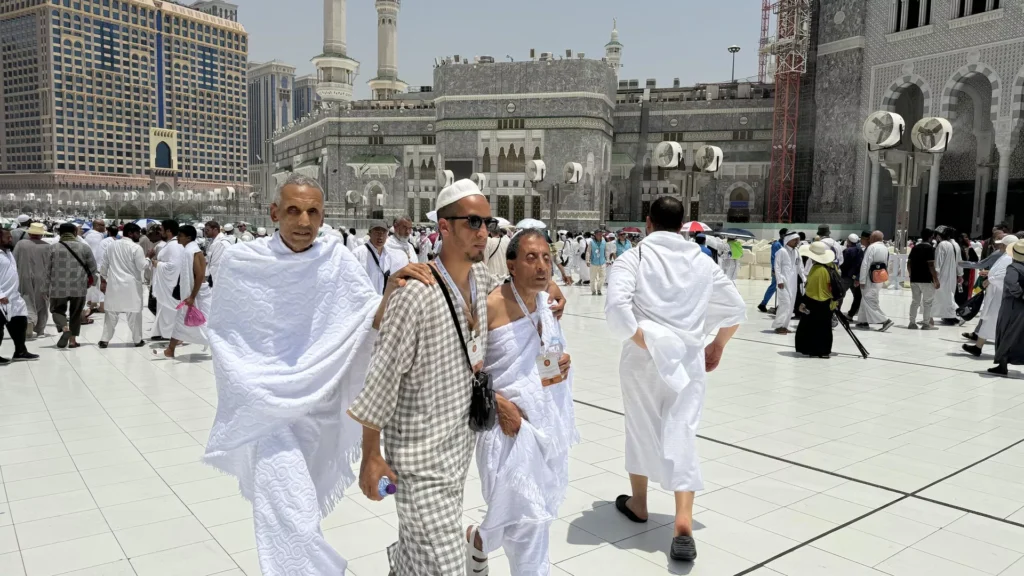
Every prayer has a unique crowd pattern. Fajr attracts pilgrims who wake early and want a peaceful start. Dhuhr and Asr bring more visitors because people are already awake and active. Maghrib often becomes the busiest because pilgrims stay for Maghrib, eat lightly, then wait for Isha. Knowing this pattern helps you decide when to enter or leave the Haram.
Peak times also affect how long it takes to walk inside. During weekends, Ramadan, or Hajj season, you may need extra time for Tawaf or prayer. Planning with these patterns in mind makes your day more predictable and relaxed.
Creating Your Personal Haram Routine
You do not need a strict timetable to enjoy an organized day. A simple routine is enough. For example, you can choose to arrive early for Fajr, stay in the Haram until sunrise, return to your hotel to rest, then come early again for Dhuhr. Between Asr and Maghrib, you might stay inside for reading Quran or making dua.
Your routine should match your energy levels. Some people prefer staying long hours in the Haram, while others prefer short but focused visits. When you understand your own pace, you can fit everything comfortably around the prayer times.
Planning for Fajr in the Haram
Fajr prayer sets the rhythm for the entire day. When you start with a peaceful Fajr, your whole day becomes balanced. Many pilgrims find that arriving at least 30 minutes before the prayer gives them enough time to settle. After Fajr, the peaceful atmosphere continues until sunrise, making it a perfect moment for Quran recitation or quiet reflection.
The time after sunrise also gives you a comfortable space to perform tawaf with smaller crowds if you prefer a less busy environment. This makes Fajr one of the most important prayers to plan around.
Using the Morning Hours Wisely

Morning hours move quickly, especially between Fajr and Dhuhr. You can use this time for breakfast, rest, or light shopping. But always keep the Dhuhr timing in mind because the midday prayer usually gathers large crowds. Planning your morning in a way that brings you back to the Haram calmly helps you avoid rushing in the heat.
You can also choose to stay in the Haram after sunrise for extra worship. Many pilgrims use this time for revising duas, reading Quran, or sitting near the Kaaba to enjoy the spiritual atmosphere without large crowds.
Planning for Dhuhr and Asr Together
Dhuhr and Asr sit close together, especially in summer months when days are long. If you stay inside the Haram after Dhuhr, consider using the time for quiet worship or reflection. Leaving and returning might take too much energy, especially during peak heat and crowds.
Some pilgrims plan both prayers inside the Haram by arriving early for Dhuhr and staying until Asr. Others return to their hotel to rest between the two. Your decision should depend on your comfort, stamina, and crowd levels.
Midday Rest and Energy Management
Afternoon heat can drain your energy, so planning rest between prayers becomes important. If you choose to stay inside the Haram, try to sit in shaded areas or upper floors where the air is cooler. If you return to your hotel, plan enough time to come back relaxed for Asr.
Good planning prevents midday exhaustion and allows you to maintain your energy for the spiritual highlights of Maghrib and Isha.
Planning for Maghrib and Isha
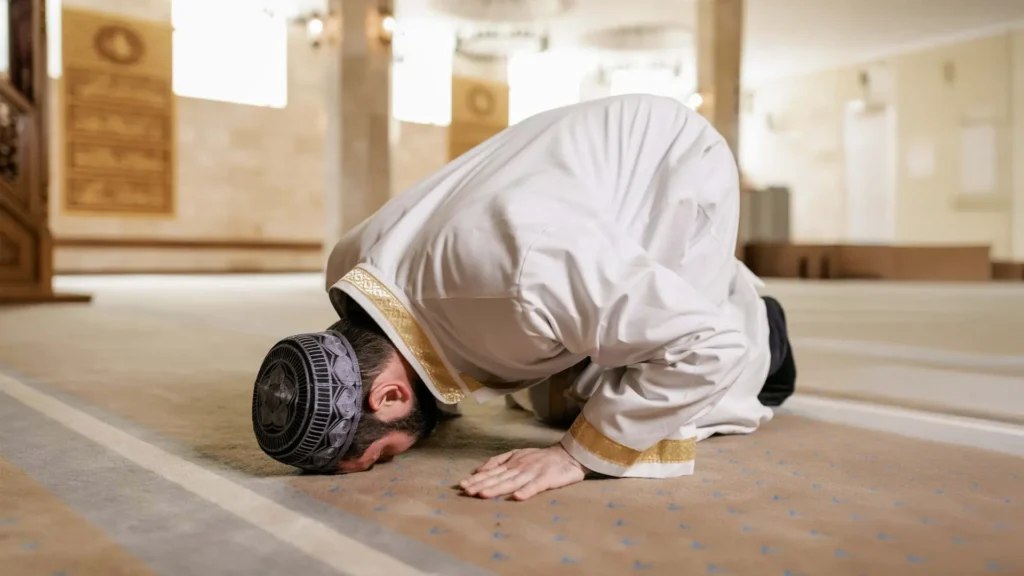
Maghrib and Isha prayers are often the busiest. Many pilgrims stay in the Haram from Maghrib until Isha because the gap between both prayers is short. This window becomes a beautiful time for quiet worship. The temperature is cooler, and the atmosphere feels calm even with crowds.
Arriving early for Maghrib helps you find a comfortable place, especially if you want to stay inside for Isha as well. Planning your evening around these two prayers helps you avoid long waiting times in crowded entrances.
Evening Worship and Reflection
Between Maghrib and Isha, many pilgrims use the time for Quran reading, silent dua, or simply looking at the Kaaba while reflecting on their blessings. The evening atmosphere inside the Haram feels spiritually rich, making it one of the best times of the day for deeper connection.
Planning your evening around these moments gives you spiritual satisfaction and reduces the feeling of rushing through the day.
Planning Tawaf Around Prayer Times
Tawaf is one of the most precious acts of worship in the Haram. When planning your day, understand that tawaf areas can become very crowded before and after prayer times. This means your best time for tawaf may fall in the quiet hours between Fajr and Dhuhr or between Dhuhr and Asr.
If you prefer a slower pace, rooftop tawaf areas offer more space and comfort. Planning tawaf during less busy times helps you complete it calmly and spiritually.
Managing Time During Rush Hours
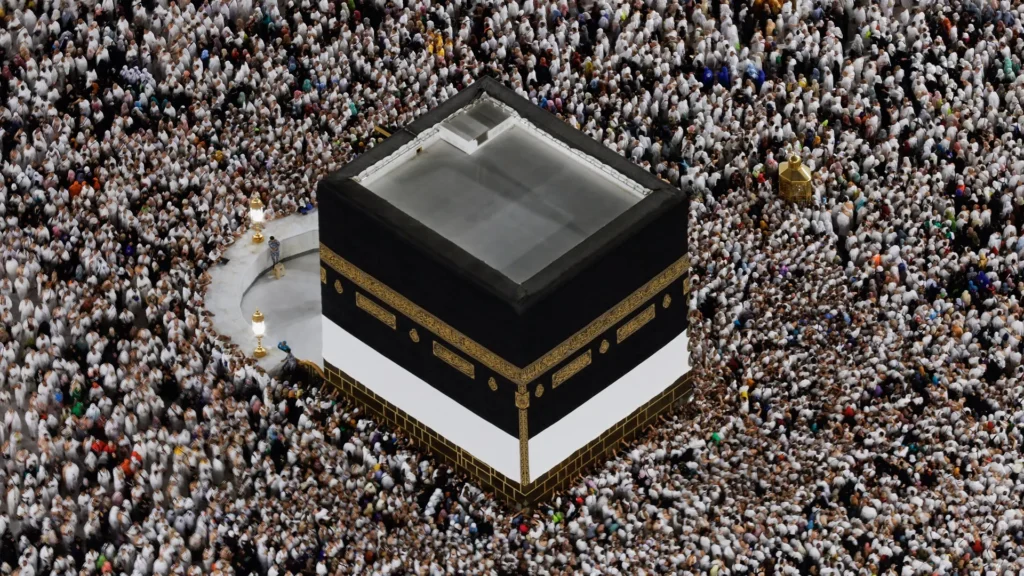
Prayer times naturally create traffic inside the Haram. Entrances become crowded, and walking takes longer than usual. Planning ahead allows you to avoid unnecessary stress. You can leave earlier, use less crowded paths, or choose different gates depending on your hotel location.
Even during extreme crowds, staying patient and calm helps you maintain spiritual focus. Good planning reduces panic and gives you more control over your movement.
Planning Meals Around the Prayer Schedule
Food plays a major role in your energy levels. Eating too close to prayer times may force you to rush or miss your place. Instead, plan meals between Salah windows. For example, eating after Fajr, between Dhuhr and Asr, or after Isha ensures you stay comfortable.
Light meals during the day and heavier meals at night often work best in the Haram, especially during hot months.
Hydration and Self-Care
Long hours inside the Haram require proper hydration, especially when walking in crowds. Zamzam water is always available, but planning regular rest and hydration helps you maintain energy. Self-care also includes using sunscreen, wearing comfortable footwear, and stretching your legs between prayers.
When you plan with your body in mind, you enjoy more peaceful worship.
Planning When Staying Far from the Haram

Not everyone stays in hotels close to the Haram. Some accommodations require longer walking times or transport. This makes planning essential. Always calculate travel time, expected crowds, and the distance you must walk before entering the prayer areas.
If you stay far, arrive earlier than usual for Maghrib and Isha because these prayers attract the most crowds. Early planning ensures you reach safely and comfortably.
Using Technology for Prayer-Time Planning
Many modern apps show real-time prayer schedules, Haram crowd indicators, and gate guides. Using these tools helps you choose the best times for entering and leaving. Some apps even offer reminders based on your location so you never miss a prayer.
Technology becomes your companion in managing the pace of your worship effectively.
Maintaining Spiritual Focus Throughout the Day
Planning your day around prayers helps you stay connected to your spiritual goals. When you are not in a hurry, your mind becomes clearer and your dua becomes deeper. You start noticing the small blessings inside the Haram, like the sound of the Adhan or the peaceful movement of worshippers.
Good planning gives you more time to reflect, observe, and truly feel the sacredness of the holy sites.
Planning with Family or Group Members

If you are traveling with family or a group, planning becomes even more important. Moving together requires coordination, especially when you book August Umrah Deals that attract larger crowds. It is helpful to set meet-up points, choose the same gate, and make sure everyone understands the timing. Groups usually move slower, so arriving early before prayers becomes extremely important.
With planning, families can pray together and enjoy a smoother experience without worrying about losing each other in crowds.
Adapting Your Plan When Needed
Even with good planning, some moments will require flexibility. Crowds change, gates close, or weather conditions may affect movement. Staying calm and adjusting your plan as needed keeps you in control. You can shift to different floors, choose a different gate, or wait for crowds to thin before moving.
Adaptability is part of the Haram experience and complements your planning efforts.
Benefits of Prayer-Time Planning
Prayer-time planning brings multiple benefits. It keeps you focused, calm, and spiritually grounded. You avoid rushing and save energy for the moments that matter most. You also gain more time to reflect, worship, and enjoy the beauty of the Haram.
Planning also helps you experience each prayer in comfort. You find better spaces, you stay connected with your group, and you maintain a steady rhythm that supports your spiritual goals.
A planned day inside the Haram creates a balance between worship, rest, and reflection. This structure strengthens your faith, discipline, and sense of purpose. You begin to feel closer to Allah as you dedicate your time wisely and mindfully.
Over time, this planning becomes a habit that continues even after you return home.
Short Conclusion
Prayer-time planning is a simple but powerful way to maximize every moment you spend in the Haram. When you organize your day around Salah, your journey becomes smoother, calmer, and more meaningful. With balance, rest, and focus, you can enjoy a spiritually rich experience that stays in your heart long after your trip ends.
Sources
- Islamic Jurisprudence Notes on Time Management in Worship
- Pilgrim Movement Studies from the Two Holy Mosques
- Haram Operations and Salah Timing Coordination Reports
- Field Observations from Pilgrimage Consultants on Daily Prayer Routines





